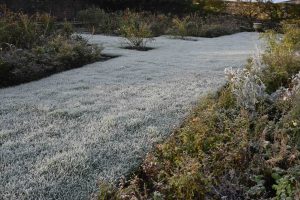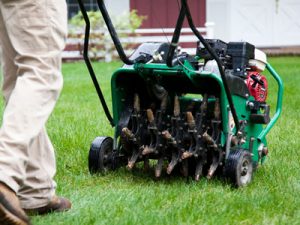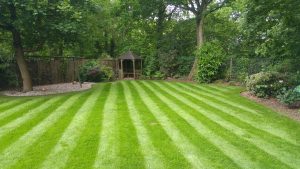Winter can be tough on a lawn. Low light levels and freezing temperatures stop grass growing. Waterlogging can cause grass plants to die and moss growth increases. Autumn leaf fall can kill patches of grass creating bare areas.
Compaction, drainage and top-dressing
Regular foot traffic over your lawn will compact the soil structure, resulting in fewer air gaps in the soil, restricting the flow of water and nutrients to roots. Compacted lawns dry out more quickly and support fewer beneficial insects and worms. They have lower counts of essential microbes required to break down dead plant life, resulting in a build-up of thatch. Symptoms include thin, stressed turf grasses more susceptible to disease and pests, allowing gaps in the turf for weed seeds and moss spores to germinate. In addition, compaction can result in waterlogging due to poor drainage and this also encourages moss growth.
Lawn Aeration
Aeration of the lawn, either with a garden fork for smaller lawn areas or a mechanical aerator for a more effective result will reduce compaction. It’s hard work, but the benefits to your lawn are invaluable.
Top-dressing after aeration will level out the surface of your lawn to some extent and help improve soil structure and drainage. Some of the dressing will fall down the holes from aeration and help improve the overall soil structure

 Established 2016
Established 2016






